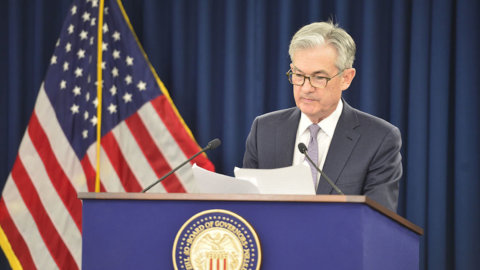The day long awaited by global bond markets began this morning with the new initiatives undertaken by the BOJ and will conclude tonight with the decisions of the FED. All eyes were on Tokyo, where the BOJ had almost cornered itself in recent weeks, after Kuroda announced last July that new measures would be taken to try to reach the 2% inflation target: even if the land of the rising sun has come out of deflation, inflation always gravitates around zero, far from the 2% target set by the central bank two years ago.
The measures undertaken by the BOJ, always innovative in new monetary experiments, are dictated by the usual Japanese pragmatism and represent an important novelty. The central bank imposes itself to anchor the 0-year government rate around the 2% level and that all the measures in place will continue as long as inflation is stably above the 0,1% level. The first move in fact represents a change in monetary policy, previously understood almost exclusively on the control of the money supply; now however the money supply will be a function of the main objective which is the level of the ten-year government rate. Furthermore, for the time being it has been decided not to further leverage negative rates and the deposit rate has remained unchanged at -XNUMX%. These two actions should be read as the implicit recognition of the negative effects of previous monetary policies which caused a massive flattening of interest rate curves with adverse consequences for banks, insurance companies and pension funds.
The immediate effect will probably be to stop the flattening of the curves, but to witness a drastic bear steepening of the curves, a real game changer will be needed, which could be either a real and effective taper of the central banks' QE or highly expansionary fiscal policies. For now, however, we can probably set aside the "lower rates with flatter curve for longer" paradigm that has dominated the world bond market scene: central banks are giving the impression that they do not want to push further on the path of negative rates and are gradually making themselves realize that excessively flat curves generate more costs than benefits. Provocatively, the action of a central bank that imposes the ten-year government level can be seen as the previous step either of a "debt mutualization" or of a large intervention of "helicopter money" or even as, diametrically opposite, the recognition of the ineffectiveness of the previously undertaken measures.
However for now the central banks are confirmed to be the main actor driving the markets and, faced with the every time renewed criticisms of "out of ammunition", they invent new surprising measures. Years ago, if central banks had presented us with a target of the ten-year government rate, we would have cried out for market manipulation; however today we accept, almost with a bitter smile, these new measures aware that a taper of QE would be destabilizing for the entire world financial markets and that the road to normalization will take years (just look at the FED which after the 25 cents of last December 2015 remained "on hold" for these first 9 months of 2016).
The BOJ added today that current monetary policies will be in place as long as inflation is "steadily" above the 2% level. The addition of the adverb "permanently" sounds a bit like someone who, after years of taking a slimming cure without seeing brilliant results, promises himself to continue with the cure when he has achieved his goals in the future. It appears to us that they are already disenchanted and aware, even if explicitly they will never be able to admit it, that their goals are unattainable in the short to medium term. Yet the widespread complacency about rates that will always and in any case remain low reminds us of the beginning of the film "The Big Short" when everyone was investing in the Eldorado of "subprime mortgages" and no one, except a visionary, warned the bubble would burst: probably not the bursting of the bond market bubble is now and will not happen in the coming months, but perhaps the recent moves by central banks represent the inflection point of the hyper-expansive monetary policies that have accompanied us up to now.





